
Henry VIII’s flagship, the Mary Rose, sank in 1545 with her crew and the ship’s dog, Hatch.
Find out more about Hatch and what he was doing on board The Mary Rose…

Henry VIII’s flagship, the Mary Rose, sank in 1545 with her crew and the ship’s dog, Hatch.
Find out more about Hatch and what he was doing on board The Mary Rose…
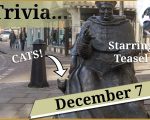
In today’s Advent treat, I’m sharing a Teasel’s Tudor Trivia video about a tradition today that goes back to Cardinal Wolsey’s time, in the reign of King Henry VIII, and which concerns cats.
[Read More...]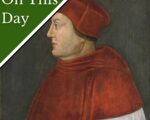
On this day in Tudor history, 18th October 1529, in the reign of King Henry VIII, Cardinal Thomas Wolsey surrendered the Great Seal of his office of Lord Chancellor following the writ of praemunire being filed against him on the 9th October.
Cardinal Wolsey had been the king’s chief advisor for many years, but he had fallen in favour after the Legatine Court of summer 1529, over which Wolsey and Cardinal Campeggio presided, had adjourned without ruling on the king’s case for an annulment of his marriage to Catherine of Aragon. Then, the pope had approved Catherine’s appeal. Historian Eric Ives, in his book “The Life and Death of Anne Boleyn”, also points out that Wolsey “lost Henry’s confidence from late August onwards by miscalculating the king’s mood and by mishandling the Treaty of Cambrai, in which Francis I totally deceived him and caused him, in turn, to mislead his master.”
[Read More...]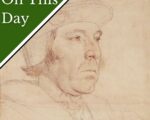
On this day in Tudor history, 15th October 1542, in the reign of King Henry VIII, courtier, diplomat and naval commander William Fitzwilliam, Earl of Southampton, died in Newcastle-upon-Tyne. It is thought that he was buried in Newcastle.
Fitzwilliam’s offices included Vice Admiral, Treasurer of the Household and Lord Privy Seal. He died while leading troops to Scotland under the command of Thomas Howard, 3rd Duke of Norfolk.
[Read More...]
On this day in Tudor history, 6th October 1557, John Capon (also known as John Salcot), former Benedictine monk and Bishop of Salisbury, died, probably from influenza. He was buried in the choir at Salisbury Cathedral.
Capon appeared to have reformist leanings in the reigns of Henry VIII and Edward VI, but became a conservative Catholic again in Mary I’s reign, and was involved in the examination of those deemed to be heretics.
[Read More...]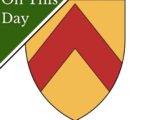
On this day in Tudor history, 1st October 1526, in the reign of King Henry VIII, Dorothy Stafford, Lady Stafford, was born.
Dorothy was the daughter of Henry Stafford, 10th Baron Stafford, and his wife, Ursula (née Pole, and she was married to Sir William Stafford, widower of Mary Boleyn. Dorothy served Queen Elizabeth I as a gentlewoman of the privy chamber and was one of her favourite sleeping companions.
[Read More...]
On this day in Tudor history, 30th September 1515, Margaret Tudor, sister of Henry VIII and former queen consort of King James IV of Scotland, fled from Scotland to England.
Margaret was pregnant with the child of her new husband, Archibald Douglas, 6th Earl of Angus, at the time.
Her remarriage had cost her the regency for her son, King James V, who had been born in 1512 and had become king on his father’s death in September 1513. John Stewart, 2nd Earl of Albany, took over as regent and had custody of the young king and his brother, Alexander. Margaret hoped that her brother, Henry VIII, would help restore her to the regency.
[Read More...]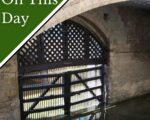
On this day in Tudor history, 22nd September 1544, in the reign of King Henry VIII, architect, carpenter and surveyor James Nedeham died while accompanying the king to Boulogne. He was buried in Boulogne at the church of Our Lady, and a monument was erected to him at the church in Little Wymondley, Hertfordshire.
Nedeham worked for Cardinal Wolsey on York Place, and then for the king on Hampton Court Palace, the Jewel House at the Tower of London and St Augustine’s in Canterbury.
[Read More...]
On this day in Tudor history, 20th September 1554, in the reign of Queen Mary I, courtier and landowner Sir William Paston died at Paston in Norfolk. He was buried there.
Paston served Henry VIII as a sheriff and commissioner, and served on the jury trying the Earl of Surrey even though Surrey’s father, the Duke of Norfolk, was his former patron.
[Read More...]
On this day in Tudor history, 16th September 1539, in the reign of King Henry VIII, nobleman, soldier and adventurer Walter Devereux, 1st Earl of Essex, was born at Chartley in Staffordshire.
Devereux was the eldest son of Sir Richard Devereux and Dorothy Hastings, and the father of Elizabeth I’s favourite Robert Devereux, 2nd Earl of Essex.
[Read More...]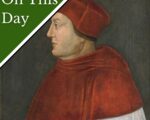
On this day in Tudor history, 15th September 1514, in the reign of King Henry VIII, Thomas Wolsey was appointed Archbishop of York. He had already been appointed Bishop of Lincoln in February of that year.
The previous Archbishop of York, Cardinal Christopher Bainbridge, had died in Rome on 14th July 1514 and Wolsey had been elected to the vacant office a few weeks later.
[Read More...]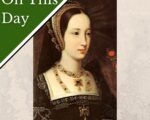
On this day in Tudor history, 14th September 1514, in the reign of King Henry VIII, King Louis XII of France and Mary Tudor, sister of King Henry VIII, married by proxy in Paris.
[Read More...]
On this day in Tudor history, 4th September 1550, Sir Thomas Paston, gentleman of the privy chamber in the reigns of Henry VIII and Edward VI, died.
Paston was a member of the famous Paston family of Norfolk.
Paston had named his wife Agnes as executrix, and their four-year-old son, Henry, was his heir.
[Read More...]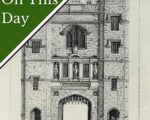
On this day in Tudor history, 30th August 1534 (some sources state 1537), twenty-eight-year-old Observant Franciscan friar Thomas Belchiam died at Newgate Prison. He had starved to death.
Belchiam and his fellow friars at Greenwich had invoked Henry VIII’s wrath by supporting Queen Catherine of Aragon during the king’s Great Matter and by refusing the oath of supremacy. Belchiam had also reportedly called the king a heretic.
It was alleged that there was an earthquake at the time of Belchiam’s death.
[Read More...]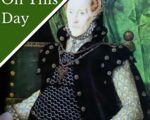
On this day in Tudor history, 25th August 1526, in the reign of King Henry VIII, Mildred Cecil (née Cooke), Lady Burghley, was born.
Mildred was the daughter of Sir Anthony Cooke, a scholar and the man who became Edward VI’s tutor, and his wife, Anne Fitzwilliam. Cooke educated his daughter himself, at home, providing her with the classical education usually reserved for boys.
Mildred is known not only for being the second wife of William Cecil, 1st Baron Burghley and Elizabeth I’s trusted minister, but for her humanist education, intelligence and fluency in Greek and Latin. Mildred also translated several works, including a Greek sermon by Basil the Great.
[Read More...]
On this day in Tudor history, 22nd August 1545, Charles Brandon, Duke of Suffolk died at Guildford in Surrey.
The magnate, courtier, soldier and close friend of Henry VIII was making preparations to lead an army to Boulogne when he suddenly died. He was laid to rest in St George’s Chapel, Windsor Castle.
You can find out more about Charles Brandon, Duke of Suffolk, in this video talk and article:
[Read More...]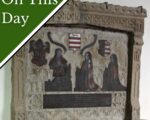
On this day in Tudor history, 21st August 1553, in the reign of Queen Mary I, courtier Sir Thomas Heneage died. He was buried in the chancel of the parish church at Hainton, Lincolnshire.
Heneage had served Henry VIII as groom of the stool and chief gentleman of the privy chamber, and went on to serve Edward VI as a gentleman of the privy chamber.
[Read More...]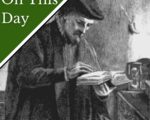
On this day in Tudor history, 19th August 1531, in the reign of King Henry VIII, Reformer Thomas Bilney was burnt at the stake at Lollard’s Pit, just outside Bishopsgate, Norwich.
Although Bilney was burnt as a heretic, he actually denied his reformist views and affirmed his Catholic faith at his execution.
[Read More...]
On this day in Tudor history, 16th August 1549, in the reign of King Edward VI, landowner and administrator Sir Christopher More died. He was buried in St Nicholas’s Church, Guildford, in the Loseley Chapel.
More was a Justice of the Peace and sheriff during the reign of Henry VIII and was appointed to the guard of honour prepared for Anne of Cleves in late 1539.
Here are some facts about Sir Christopher More:
Sir Christopher More was born in around 1483 and was the son of fishmonger John More and his wife, Elizabeth.
By 1504, More was married to Margaret Mugge, who came from Guildford, and the couple had 12 children together. By 1535, Margaret had died and More had married Constance Sackville, widow of William Heneage.
In 1505, in the reign of King Henry VII, More was made a clerk of the exchequer, and More also purchased the office of alnager, i.e. an inspector of the quality and measurement of woollen cloth, in Surrey and Sussex.
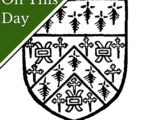
On this day in Tudor history, 11th August 1556, politician Sir John Kingsmill, a man who had been close to Thomas Cromwell and Thomas Wriothesley, died.
He served as a sheriff in the reign of Henry VIII and as a commissioner for the dissolution of chantries in 1548 to Edward VI.
Here are some more facts about Sir John Kingsmill:
[Read More...]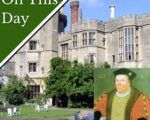
On this day in Tudor history, 2nd August 1514, Edward Stafford, Duke of Buckingham, was granted a licence to found a college at Thornbury in Gloucestershire.
There had been a manor there since the 10th century, but it was Buckingham who built Thornbury Castle. He obtained a licence to crenelate his manor in 1510 and building work began in 1511. Thornbury was built to the medieval quadrangular layout, with a large outer courtyard. The entrance front with its central gatehouse and octagonal corner towers is still standing, as are two of the side ranges. The surrounding curtain wall is intact on three sides.
Buckingham never saw it completed. He was executed in 1521. The manor was seized by Henry VIII, who stayed there with Anne Boleyn in 1535.
[Read More...]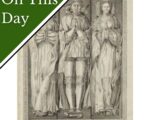
On this day in Tudor history, 26th July 1538, in the reign of King Henry VIII, George Talbot, 4th Earl of Shrewsbury and 4th Earl of Waterford, died at South Wingfield Manor, Derbyshire. He was buried at St Peter’s Church, Sheffield.
Here are a few facts about him…
[Read More...]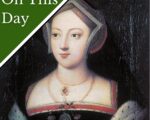
On this day in Tudor history, 19th July 1543, in the reign of King Henry VIII, Mary Boleyn died. It is not known where she was laid to rest.
Mary was the daughter of Thomas Boleyn, Earl of Wiltshire and Ormond, and his wife, Elizabeth Howard. She was the granddaughter of Thomas Howard, 2nd Duke of Norfolk, and sister of Queen Anne Boleyn and George Boleyn, Lord Rochford. At some point, she had been King Henry VIII’s mistress, but nothing is known of their relationship.
[Read More...]
On this day in history, 17th July 1537, Janet Douglas, Lady Glamis, was burnt to death for treason on the castle hill at Edinburgh.
Janet had been charged with plotting to poison King James V, nephew of King Henry VIII, and assisting and corresponding with her brothers, Sir George Douglas and Archibald Douglas, 6th Earl of Angus.
[Read More...]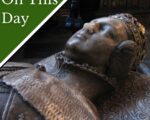
On this day in Tudor history, 16th July 1517, the feast of St Francis, Frances Brandon was born at Hatfield. She was the eldest daughter of Charles Brandon, Duke of Suffolk, and Mary Tudor, widow of King Louis XII of France and sister of Henry VIII.
Frances married Henry Grey, Marquis of Dorset (later Duke of Suffolk). They had three children: Jane, Katherine, and Mary.
[Read More...]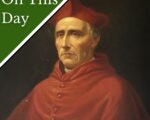
On this day in Tudor history, 14th July 1514, in the reign of King Henry VIII, Cardinal Christopher Bainbridge died in Rome of alleged poisoning. He was about 51 years old.
Bainbridge started his church career in Henry VII’s reign and became Archbishop of York in 1508. He was chosen as an executor of the king’s will.
[Read More...]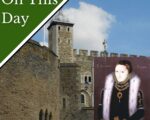
On this day in Tudor history, 10th July 1561, Queen Elizabeth I visited the Tower of London mint to check on the progress of her new coins.
Debasement of coins had happened between 1544 and 1551, in the reigns of Henry VIII and Edward VI, when the government was looking to fund foreign wars. The ratio of precious metal to alloy was reduced, so more coinage could be produced more cheaply, with the government pocketing the profit.
[Read More...]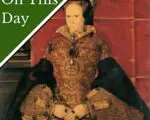
On this day in Tudor history, 7th July 1553, the day after the death of King Edward VI, his half-sister, Mary, received news of his death.
Mary, the daughter of Henry VIII by his first wife, Catherine of Aragon, had left Hunsdon on 3rd July after hearing that Edward was dying and that there was a plot against her. She set off for her estates in East Anglia, where she had support.
[Read More...]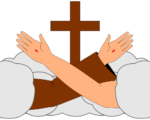
This week’s Monday Martyr is Franciscan friar Anthony Brookby (Brockby), who was executed on 19th July 1537, in the reign of King Henry VIII.
In her 19th century book “Faithful unto Death”, J M Stone explains that Father Anthony Brookby was a Latin, Greek and Hebrew scholar who was Professor of Divinity at Magdalen College, Oxford, and “celebrated for his eloquence as a scholar”. He got into trouble when, during a sermon at the Church of St Lawrence, Brookby “spoke of Henry’s new marriage, as the cause of the dreadful evils which threatened to overwhelm the country”. He went on to denounce England’s break with Rome and the dissolution of the monasteries.
[Read More...]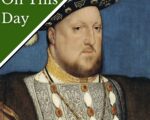
On this day in Tudor history, 1st July 1536, Parliament gave the Second Act of Succession its first reading.
This act superseded the 1534 Act of Succession, which had made Mary, Henry VIII’s daughter by Catherine of Aragon, illegitimate and had appointed Elizabeth, his daughter by Anne Boleyn, as heir to the throne.
The new act declared the illegitimacy of both of Henry’s daughters. Both girls were now barred from the line of succession and, Elizabeth, like Mary, now lost her title of “princess”.
[Read More...]